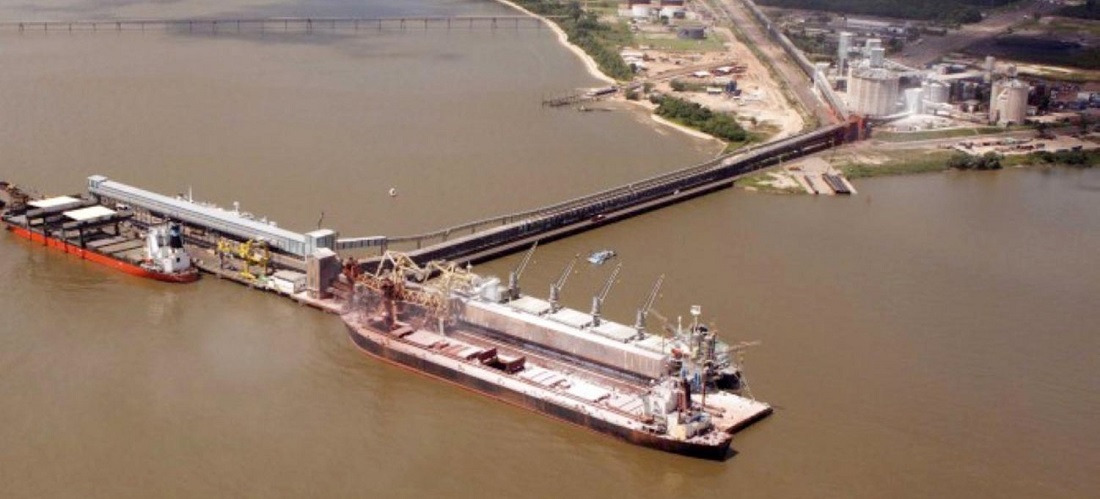
Ports in Northern Brazil experience 25% growth in cargo throughput
Feb, 08, 2024 Posted by Gabriel MalheirosWeek 202406
The exceptional performance of Brazil’s grain harvest, coupled with private investments in port infrastructure for international trade, paints a picture of success in Northern Brazil. Naturally suited for integration with fluvial logistics, ports in the Amazon Arc – terminals located in northern Brazil and the state of Maranhão – experienced a growth of up to 25% in cargo throughput in 2023.
According to the Association of Port Terminals and Cargo Transshipment Stations of the Amazon River Basin (Amport), in 2022, over 51% of all grains destined for export from Brazil were shipped from the region, compared to 49% from other locations. In 2023, this number exceeded 50 million tonnes exported from Northern Brazil alone, with Pará accounting for 50% of this share.
Ports in northern Brazil, namely, the port complexes of Porto Velho (Roraima), Itacoatiara (Amazonas), Santarém (Pará), Miritituba (Pará), Vila do Conde (Pará), Santana (Amapá), and Itaqui (Maranhão) primarily handle soybeans and corn destined for various countries worldwide. In 2023, soybeans represented approximately 70% of the total volume handled in the Northern Arc, with corn comprising the remaining 30%. These percentages may shift in the coming months, according to Amport’s projections, due to the robust corn harvest in the country’s interior.
One reason behind the performance in cargo movement at the Amazon Arc terminals, according to Amport’s president, Flávio Acatauassú, is the commercially attractive logistics chain anchored in fluvial transportation. “Internationally, clients are increasingly concerned with environmental and sustainability issues throughout the transportation logistics. Since over half of our internal logistics rely on the use of waterways, we become more competitive than ports in the South and Southeast regions, which rely on railways and highways to transport cargo to ports,” he notes.
Flávio adds, “As long as we have abundant water and geographical conditions that allow for sustainable logistics like ours, the trend is only to grow.”
Budding Pará
Amport brings together 13 companies that ship vegetable, mineral, and liquid bulk through the Amazon region. Pará leads in exports through Northern Brazil ports due to its port complex in Barcarena, a municipality in the Metropolitan Region of Belém, boasting extensive navigable areas and large river expanses for internal logistics.
Within the growth of Northern region ports, Pará stands out as the main driver of the Amazon Arc with its vegetable bulk cargo movement. Barcarena has a strategic location with the largest anchorage areas and the widest and deepest rivers for port operations. “Our waterways are essential. We shouldn’t even think about highways when we have our rivers as a means of transportation,” explains Flávio.
Until ten years ago, port terminals in cities like Itaituba, Santarém, Barcarena, and Porto Velho were considered logistical experiments by most producers in Mato Grosso, given the lack or precarity of access infrastructure to the terminals. Today, these locations have gained ground as alternatives to terminals in Santos and Paranaguá.
Information from the National Waterway Transport Agency (Antaq) indicates that in 2010, port throughput in the Northern Arc accounted for only 23% of the national soybean and corn production. By 2015, this share had already jumped to 31%, reaching 50% last year, with most grains exported to Asia.
Reduction in Costs
Logistics companies account for a significant portion of investments in this region. Data from the National Supply Company (Conab), an agency linked to the Ministry of Agriculture, shows that today, a producer shipping their cargo by truck from Sorriso (MT) to the port of Santos must travel a distance of 2,171 km and pay R$ 300 per ton of transported grain. They might even split this journey using a railway from Rondonópolis (MT), but it will hardly change the freight price.
If the same producer from Sorriso chooses the terminal in Miritituba, Itaituba, Pará as their destination, their distance will be reduced to 1,017 km until reaching the Tapajós waterway, at R$ 160 per ton. The production is loaded onto barges in Miritituba and transported by waterway to the port of Vila do Conde for export.
Source: Informativo dos Portos
Click here to read the original text: https://www.informativodosportos.com.br/portos-do-arco-amazonico-registram-crescimento-de-mais-de-20-em-movimentacao/
-
Ports and Terminals
Jul, 21, 2021
0
Port of Rio de Janeiro registers high handling and sales in 2021
-
Economy
Jan, 31, 2023
0
DataLiner: new data reveal large drop in Brazilian containerized exports in 4Q22
-
Ports and Terminals
Apr, 11, 2025
0
New Shipping Route Between Ceará and China to Benefit Shein and Shopee, Boost Imports by 20%
-
Ports and Terminals
Sep, 03, 2024
0
Portus Pension Fund Dispute Ends After 20 Years, R$ 1.15 Billion Settlement Approved

